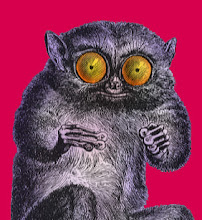 No, we didn't run off to Paris and never come back - much as we fantasised about such a plan of action. Between the killer currency conversion menacing us abroad and the little creatures awaiting us at home, a spot of absconding was not really on the agenda. The loveliest part about coming home (apart from the truly ecstatic reaction of the Pupster) is that I have somehow managed to retain the relaxing effects of a wonderful holiday. And it's Spring!
No, we didn't run off to Paris and never come back - much as we fantasised about such a plan of action. Between the killer currency conversion menacing us abroad and the little creatures awaiting us at home, a spot of absconding was not really on the agenda. The loveliest part about coming home (apart from the truly ecstatic reaction of the Pupster) is that I have somehow managed to retain the relaxing effects of a wonderful holiday. And it's Spring!Not that this relaxation means any slacking off on Hamlet. Since coming back, I've been working madly, madly, madly on it. And as I've been approaching the whirlpool centre of the play, stuff like blogging tends to fall off a bit. Sorry about that. Thanks to Nathalie for reminding me to post!
So the Hamlet tally is: 181 pages (and four soliloquies) down; with approximately 240 pages (and exactly four soliloquies - three for Hamlet, one for the King) to go. The super news is - I've done The Big One. The most famous piece of dramatic speech ever. "To be, or not to be". The fourth soliloquy - the goddamn Question! Yowie.
It was thrilling. It really was one of the most exciting scribbling experiences I've ever had, if not the most exciting. I spent two and a half days (and by "days" I mean 11-hour marathons) executing the ten pages of the soliloquy - with frequent bouts of pacing, posing, gurning and grimacing, talking to myself, leaping about to let off steam and "yes!"-ing. But this was, of course, the tip of the iceberg. There was a hell of a lot of planning, roughs, notes, reading and so on that shaped it before I approached the final drawings. I'd come up with the basic idea about a year ago, but refined it and rethought it and changed my mind almost as often as the Dane himself, before I finally came up with just what I wanted.
"Performing" the soliloquies on the page is a fascinating process. As always, I want the pictures to add something significant to every phrase, so there is no question of just letting the character pace up and down making faces and gesticulating while he "speaks" the lines. What a waste that would be. There has to be something more - something that unpacks and illuminates and even interrogates the words of the soliloquy.
On the stage an actor can do so much of this with voice, delving into the inexhaustible toolbox of volume, emphasis, tone, modulation, facial movement, timing, rhythm, verse-speaking, inflection, and of course, silences or pauses. Add movement to this, and the on-stage possibilities are limitless. On the page, though, we have neither sound nor real time movement at our disposal. What a challenge!
So what I aim to do - and not only in the soliloquies - is exploit the special devices that are unique to the graphic medium, to achieve a different kind of drama. These devices can be very broadly bundled into two types, which are inextricably linked and overlap: composition (the layout of the page, the character placement, the shape and location of speech bubbles, the way the panels combine and interact etc) and content (including the cool stuff that you can do on a page, but which would be difficult or impossible to achieve in "real life" with its pesky space-time constraints). Tied up with this is my own favourite scribbling activity, which is all about making the structure of the book, the page and the frames themselves part of the storytelling. Characters use or push against the boundaries of the frames, objects (and characters) tumble down the page from one frame into another, and terrifying things menace us from the darkness outside the panel borders. In some instances, turning a page even shows you what is happening "behind" it. Ooh, I love that stuff!
The soliloquy is too fresh and "just-out-of-the-oven" for me to post any snippets here. In fact, I'm even coy about posting a picture of Our Hamlet at this stage. So instead I've posted a little peek at Ophelia being admonished by her pain-in-the-arse father - because I feel bad being such a tease and not showing any of the goodies.
This week Ophelia gets even more trauma as we get into what I consider the hardest scene of the play. The mad, bad, "Get thee to a nunnery" scene. Hamlet and I have to spend the next ten pages or so tearing this sweet Ophelia creature to tatters. Juggling love, disappointment, fury, disgust, sadness, betrayal, desire, judgement, confusion, suspicion, sexual nausea, self-loathing, regret - all this while toying with one's sanity. I am going to have to dig deep for this one.

